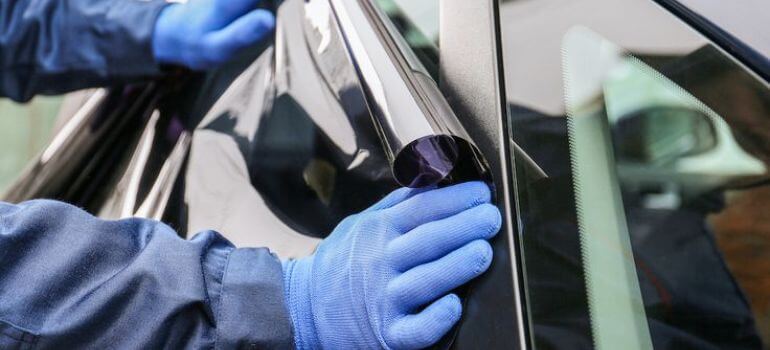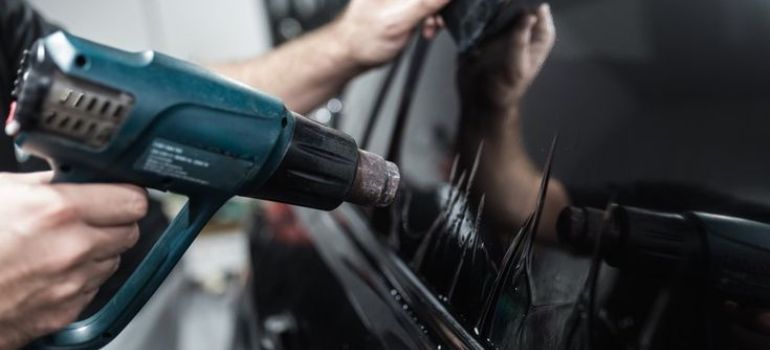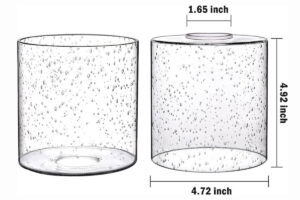When it comes to choosing window tinting for your car, understanding the differences between carbon and ceramic tints is crucial. In Austin, Texas, many car owners are looking for the best option to keep their vehicle cool and protected.
Carbon window tint and ceramic tint both offer heat reduction and UV protection, but ceramic tint provides superior quality, durability, and improved security features. If you’re considering tinting your car windows, it’s important to weigh the benefits of each type to make an informed decision that suits your needs.
Let’s explore the key differences between carbon and ceramic window tints to help you make the best choice for your car.
Explaining The Difference
When selecting a window tint for your car, two popular options are carbon window tint and ceramic tint. Both provide benefits such as heat rejection and UV protection, but it’s important to understand the differences between the two. Let’s delve into the composition and properties, heat rejection performance, and UV protection capability of carbon window tint versus ceramic tint.
Composition And Properties
Carbon window tint is typically made using a blend of carbon particles that are highly effective at blocking infrared rays and heat. It is known for its sleek, matte finish and its non-metallic composition, which ensures it does not interfere with electronic devices such as GPS or cell phone signals. On the other hand, ceramic tint is composed of non-metallic and non-conductive ceramic particles. This allows it to provide exceptional heat rejection while being radio frequency (RF) friendly, making it an ideal choice for modern vehicles equipped with advanced technology.
Heat Rejection Performance
Carbon window tint offers significant heat rejection, making it an excellent choice for reducing the interior temperature of your vehicle. However, ceramic window tint takes heat rejection to the next level due to its advanced composition, providing superior protection against solar heat. The use of nano-ceramic technology allows ceramic tint to block out a higher percentage of infrared and UV rays compared to carbon window tint, resulting in a cooler and more comfortable interior environment.
Uv Protection Capability
Both carbon window tint and ceramic tint are effective at blocking harmful UV rays that can cause damage to your skin and the interior of your car. However, ceramic tint offers an enhanced level of UV protection, reducing the fading of upholstery and prolonging the lifespan of your vehicle’s interior. Its advanced UV-blocking capabilities make ceramic tint an ideal choice for those seeking maximum protection against sun damage.
Benefits Of Carbon Window Tint

When it comes to window tinting, choosing the right type of tint can make a significant difference in enhancing the comfort and protection of your vehicle. In this comparison of Carbon Window Tint vs. Ceramic Tint, we’ll specifically dive into the benefits of Carbon Window Tint.
Enhanced Heat Rejection
One of the primary benefits of Carbon Window Tint is its exceptional ability to reject heat. The carbon particles in the tint effectively block a significant amount of infrared heat, keeping the interior of your car cooler and more comfortable, especially during hot summers. This feature not only enhances driving comfort but also helps reduce the load on your car’s air conditioning system, contributing to fuel efficiency.
Fade Resistance
Carbon Window Tint is known for its superior fade resistance. The carbon elements in the tint act as a barrier to UV rays, preventing them from penetrating the windows and causing damage to the interior of your vehicle. By significantly reducing UV exposure, Carbon Window Tint helps preserve the color and condition of your car’s upholstery, dashboard, and other interior surfaces, ultimately prolonging the life of your vehicle’s interior components.
Reduced Glare
Another advantage of Carbon Window Tint is its ability to reduce glare. The tint’s properties effectively minimize the blinding effect of sunlight and artificial light, providing a clearer and more comfortable driving experience. This reduction in glare not only enhances visibility but also contributes to overall safety on the road, especially during dawn, dusk, or when driving in brightly lit urban areas.
Advantages Of Ceramic Tint
Ceramic window tint offers several key advantages over other types of window tinting. With its advanced technology and exceptional features, ceramic tint provides superior heat rejection, maximum UV protection, and unparalleled clarity and signal-friendly properties.
Superior Heat Rejection
Ceramic window tint is renowned for its exceptional ability to block out heat from the sun. Using advanced ceramic particles, this tint can reject up to 90% of infrared heat, keeping the interior of your vehicle significantly cooler compared to traditional tints. This not only enhances comfort during hot weather but also reduces the strain on your air conditioning system, contributing to improved fuel efficiency.
Maximum Uv Protection
One of the standout advantages of ceramic tint is its ability to provide maximum UV protection. With 99% UV rejection, ceramic tint safeguards the occupants and interior surfaces of your vehicle from harmful UV rays. This not only helps prevent skin damage and fading of upholstery, but also contributes to a healthier and safer driving environment.
Clarity And Signal-friendly
Unlike other types of tint that can interfere with electronic signals, ceramic tint maintains excellent clarity and signal-friendly characteristics. Its innovative design allows for unobstructed visibility and does not interfere with radio, GPS, or mobile phone signals, ensuring a seamless driving experience without any compromise on communication and navigation.
Cost And Durability
When considering window tint options for your vehicle, two popular choices are carbon window tint and ceramic tint. In this article, we’ll delve into the cost and durability differences between the two types of window tint, helping you make an informed decision for your specific needs.
Initial Installation Cost
When it comes to the initial installation cost, carbon window tint is generally more affordable than ceramic tint. The cost of window tinting can vary based on factors such as the size and type of vehicle, the tint brand, and the installer’s labor charges. On average, carbon window tint can range from $200 to $500 for a standard sedan, while ceramic tint typically falls in the range of $400 to $800 for the same vehicle.
Long-term Maintenance
Both carbon window tint and ceramic tint require minimal maintenance once installed. However, it’s important to note that ceramic tint is known for its superior durability and longevity compared to carbon tint. While both types offer UV protection and heat resistance, ceramic tint is less prone to fading, discoloration, and peeling over time. This can result in lower long-term maintenance costs and a longer lifespan for ceramic tint, making it a cost-effective choice in the long run.
Durability Comparison
When comparing the durability of carbon window tint versus ceramic tint, it’s clear that ceramic tint outperforms carbon tint in terms of longevity and resilience. Ceramic tint is engineered to withstand the harsh effects of UV rays and maintain its optical clarity and performance over an extended period. This makes it a durable investment that can provide ongoing protection for your vehicle’s interior and occupants, ultimately reducing the need for premature replacement or reapplication.
Application And Installation
When it comes to choosing the right window tint for your vehicle, understanding the differences between carbon window tint and ceramic tint is crucial. This includes their application and installation. Each type offers unique benefits, and knowing which one best suits your needs can make a significant difference. Let’s delve deeper into the application, installation process, and maintenance requirements, to help you make an informed decision.
Window Compatibility
Both carbon and ceramic tints are compatible with most types of vehicle windows, including curved and flat surfaces. However, ceramic tints might be more suitable for vehicles with electronic devices installed in the windows, as they are non-conductive and won’t interfere with signals.
Installation Process
The installation process for both carbon and ceramic tints involves a similar set of steps. However, the application of ceramic tint is a bit more complex and requires precision. It involves careful handling to ensure a flawless finish due to its construction from ceramic particles. On the other hand, carbon window tint is easier to install, making it a quicker process for professional installers.
Maintenance Requirements
When it comes to maintenance, both types of tints are relatively easy to care for. Regular cleaning with a mild detergent and soft cloth is sufficient to keep them in good condition. However, ceramic tints might require less frequent cleaning due to their smooth, non-porous surface that repels dirt and grime more effectively than carbon tints.
Environmental Impact
When choosing window tint for your vehicle or home, it’s important to consider the environmental impact. Carbon window tint and ceramic tint are two popular options that offer a range of benefits, including UV protection, heat reduction, and enhanced privacy. In this article, we will delve into the environmental impact of these two types of window tint, focusing on sustainability, energy efficiency, and disposal considerations.
Sustainability
Carbon window tint and ceramic tint both have their unique environmental sustainability features. While carbon window tint is generally made from a synthetic carbon particle mixture, ceramic tint is composed of non-metallic and non-conductive ceramic particles. The manufacturing process for ceramic tint involves fewer harmful chemicals and emits lower levels of volatile organic compounds (VOCs) compared to carbon tint. This makes ceramic tint a more sustainable option in terms of production.
Energy Efficiency
When it comes to energy efficiency, ceramic tint often outshines carbon tint. The heat rejection properties of ceramic tint are superior, allowing for better temperature control inside the vehicle or building. By reducing the reliance on air conditioning systems, ceramic tint can contribute to lower energy consumption and decreased carbon emissions. This can have a positive impact on the overall energy efficiency of your vehicle or property.
Disposal Considerations
Both carbon window tint and ceramic tint are durable and long-lasting, reducing the frequency of replacements and minimizing waste. However, when it comes to disposal, ceramic tint is the more environmentally friendly option. Due to its composition of non-metallic materials, ceramic tint can be recycled more efficiently than carbon tint. Additionally, the disposal of old ceramic tint is less likely to pose environmental hazards compared to carbon tint, making it a more sustainable choice in the long run.
Choosing The Right Option
When it comes to choosing the right window tint for your vehicle, the decision between carbon window tint and ceramic tint can be a challenging one. Both options offer their own set of benefits and considerations, making it essential to weigh the factors that align with your specific needs. Whether it’s for heat reduction, UV protection, or aesthetics, understanding the key differences can help you make an informed choice.
Vehicle Type Consideration
When choosing between carbon window tint and ceramic tint, it’s crucial to consider the type of vehicle. For instance, if you own a luxury car or a vehicle with advanced electronic systems, opting for ceramic tint might be the optimal choice. Ceramic tint’s non-conductive properties make it suitable for minimizing interference with electronic devices, ensuring the functionality of your car’s technology remains uncompromised.
Regional Climate Influence
The climate of your region should also play a pivotal role in your decision-making process. If you reside in an area with consistently high temperatures, such as desert regions, investing in ceramic tint can provide superior heat rejection compared to carbon window tint. Its ability to block infrared rays effectively can offer substantial relief from the scorching heat, creating a more comfortable driving experience.
Personal Preferences And Budget
Aside from technical considerations, personal preferences and budget constraints are influential factors. Carbon window tint, known for its affordability and respectable heat-rejecting properties, could be an appealing choice for budget-conscious individuals. On the other hand, if durability and advanced UV protection are your primary concerns, allocating a higher budget for ceramic tint might be a worthwhile investment in the long run.
Conclusion
When it comes to choosing between carbon window tint and ceramic tint, it’s important to consider your specific needs. While both options offer solar heat and sun fading protection, ceramic tint stands out for its enhanced security, durability, and anti-shattering properties.
If you prioritize these features, ceramic tint is the ideal choice for your vehicle.
Frequently Asked Questions On Carbon Window Tint Vs. Ceramic Tint
Ceramic tint is better than carbon tint for enhanced security, safety, and durability. Both tints prevent heat and fading, but ceramic offers superior properties for increased protection.
Carbon tint typically lasts for several years, providing both heat reduction and UV protection. For enhanced security and anti-shattering properties, ceramic tint is a better option.
Yes, ceramic tint is easier to see out of at night compared to regular tint, as it maintains better visibility while providing heat reduction and UV protection.
Ceramic tint is better than carbon tint for quality, durability, and enhanced security. Both prevent heat and fading, but ceramic offers improved safety and anti-shattering properties. It also provides better visibility at night compared to regular tint.



